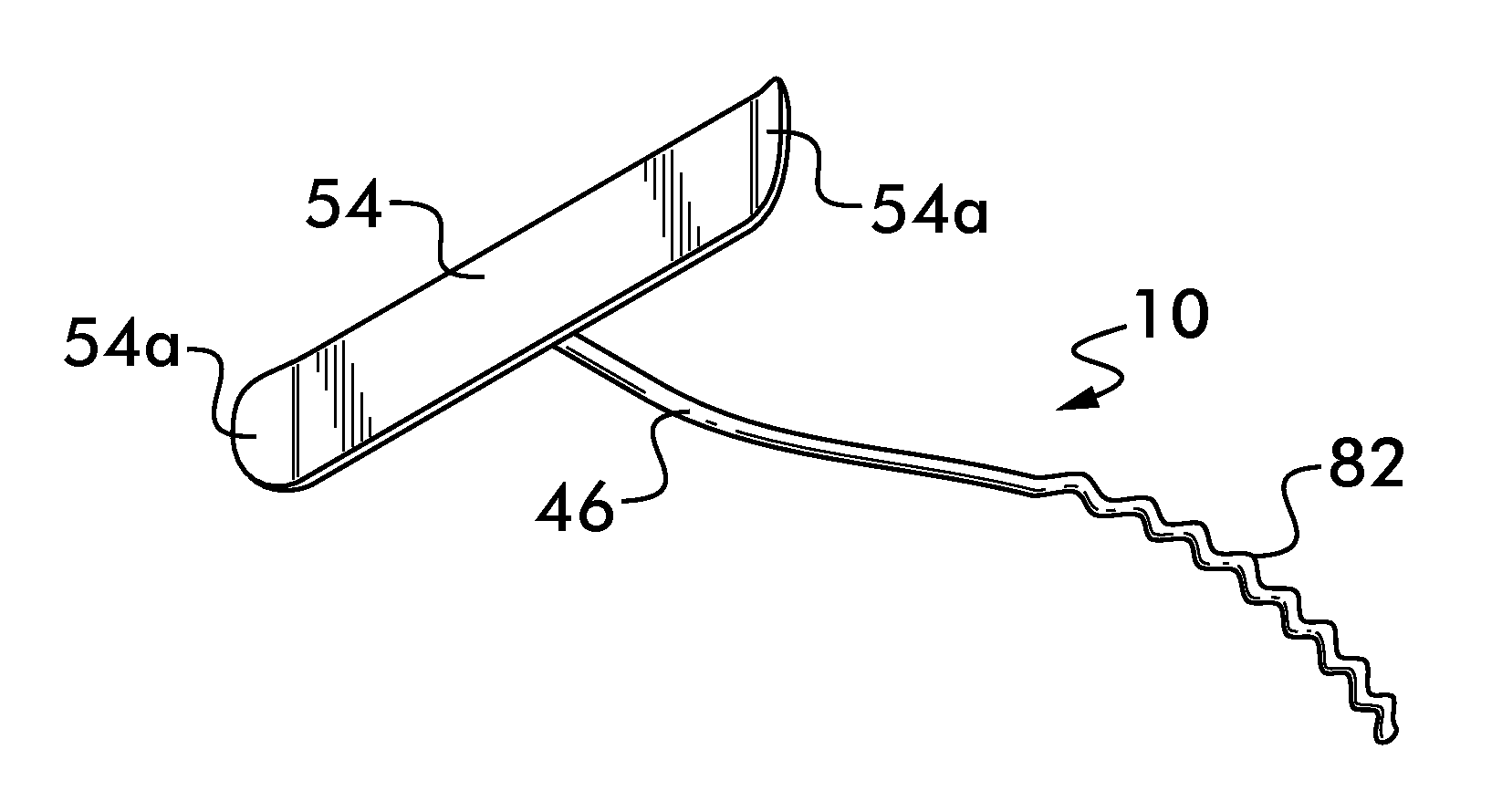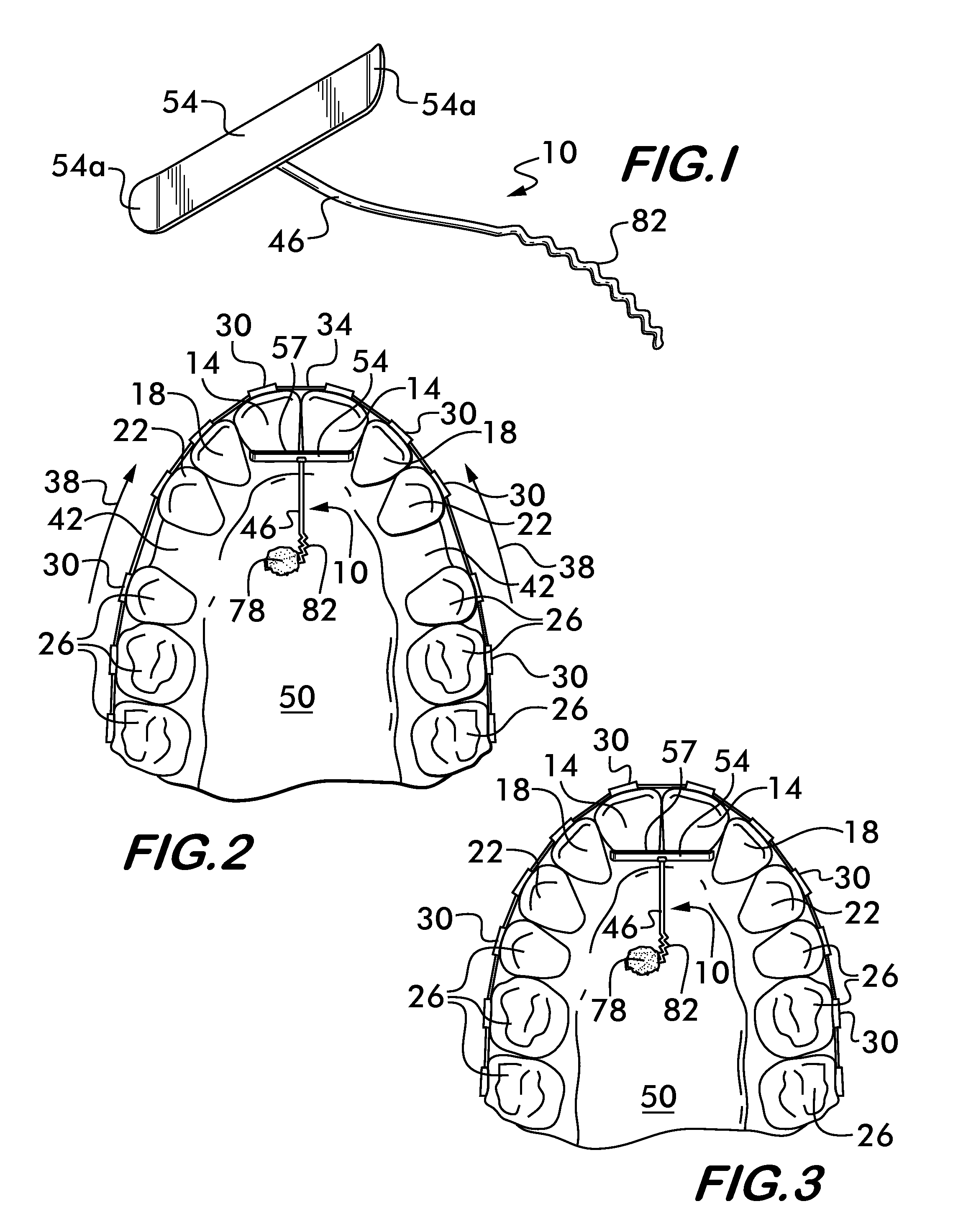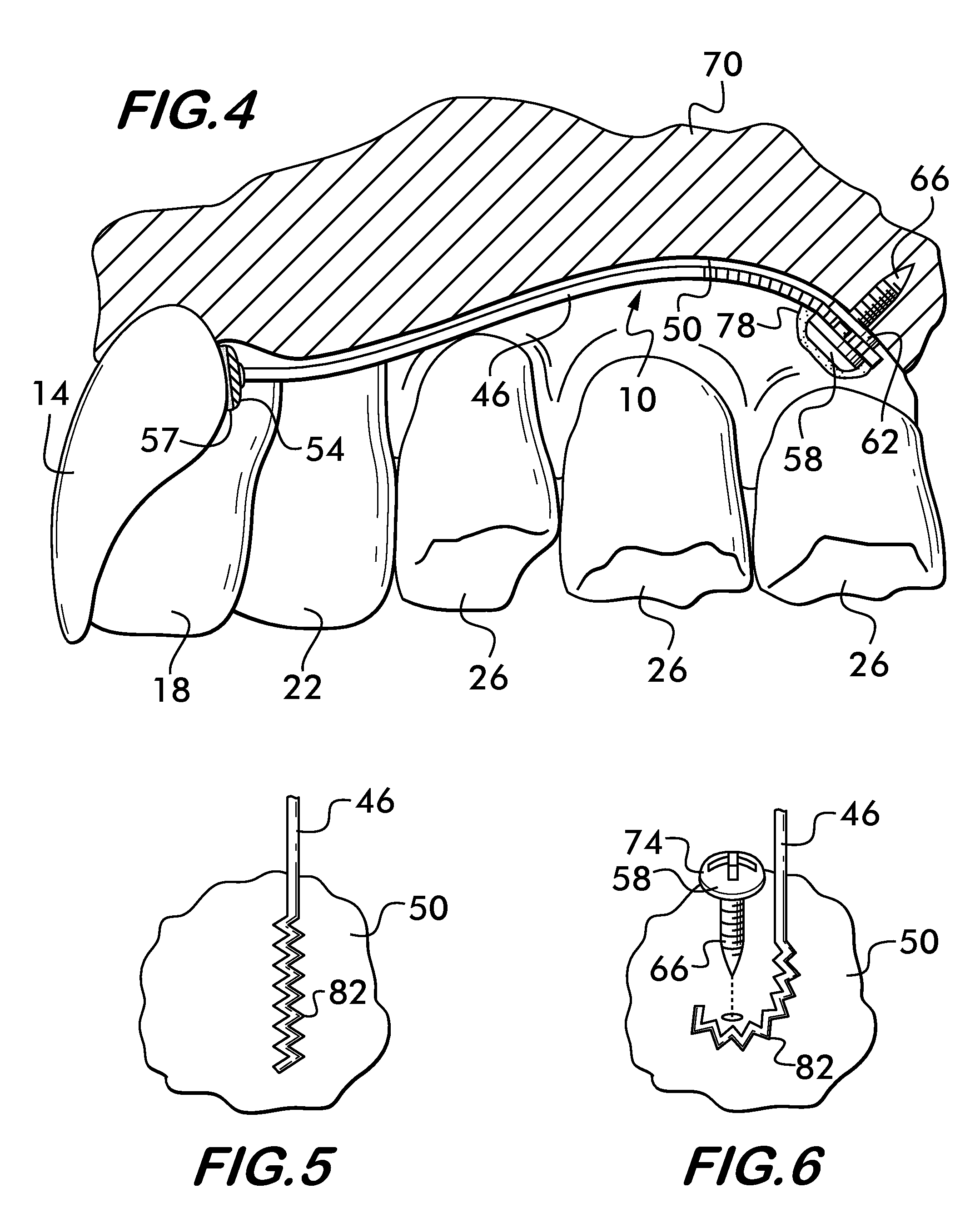Palatal T-Bar
a t-bar and palatal technology, applied in the field of palatal t-bars, can solve the problems of high cost and significant healing time of dental implants, and achieve the effect of preventing movement of selected teeth
- Summary
- Abstract
- Description
- Claims
- Application Information
AI Technical Summary
Benefits of technology
Problems solved by technology
Method used
Image
Examples
Embodiment Construction
[0016]Referring now in greater detail to the drawings in which like numerals represent like components throughout the several views, FIGS. 1-4 illustrate a first preferred embodiment of the palatal t-bar 10 of the present invention. As best shown in these figures, the palatal t-bar 10 is intended for placement within the mouth of a patient to serve as an anchorage to prevent one or more selected teeth (as an example here shown on teeth 14) anchored within the t-bar 10 from rotating, torquing, or moving distally during corrective movement of other teeth. Such other teeth may include lateral incisors 18, canines 22, or posterior teeth 26. As shown in FIGS. 1-4, corrective movement of teeth 14, 18, 22, and 26 is shown as being accomplished utilizing orthodontic braces, wherein brackets 30 are bonded to teeth 14, 18, 22, and 26 and an arch wire 34 is attached to the brackets 30 in known ways. The arch wire 34 exerts pressure on the brackets 30 and teeth 14, 18, 22, 26 whereby the positi...
PUM
 Login to view more
Login to view more Abstract
Description
Claims
Application Information
 Login to view more
Login to view more - R&D Engineer
- R&D Manager
- IP Professional
- Industry Leading Data Capabilities
- Powerful AI technology
- Patent DNA Extraction
Browse by: Latest US Patents, China's latest patents, Technical Efficacy Thesaurus, Application Domain, Technology Topic.
© 2024 PatSnap. All rights reserved.Legal|Privacy policy|Modern Slavery Act Transparency Statement|Sitemap



